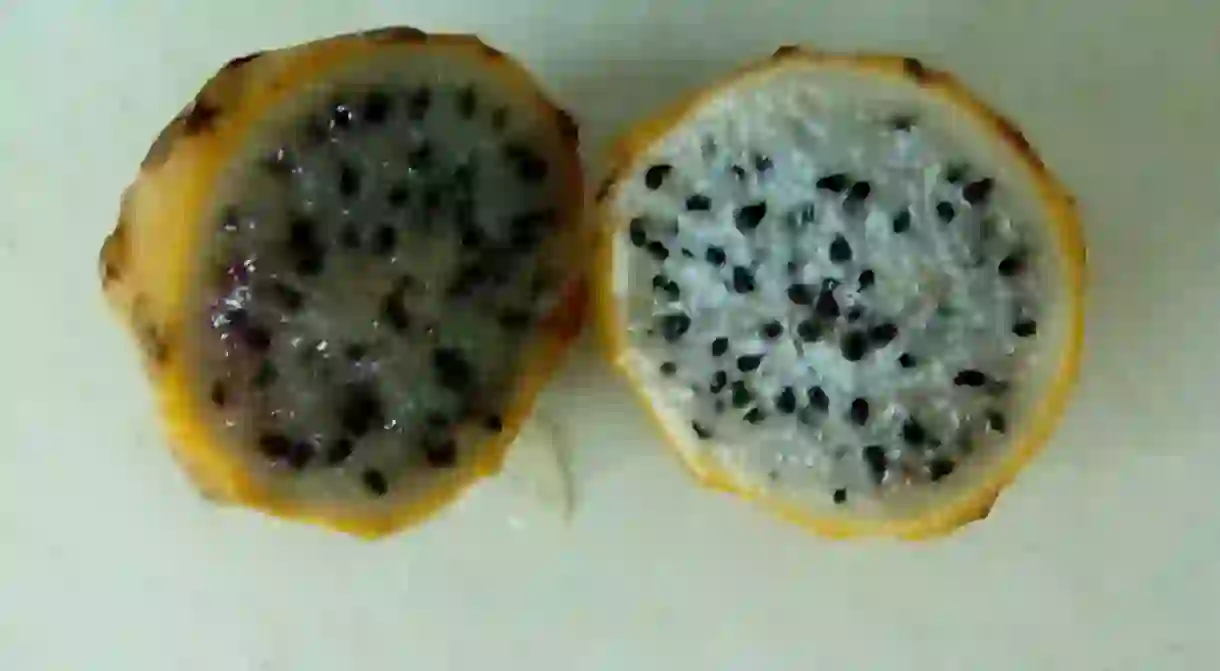17 Tropical Fruits You Need to Try in Ecuador

Ecuador produces the banana, the pineapple, the coconut, the mango, the watermelon, and the papaya, but it also features a world of more exotic fruit. Try some of these wonderfully diverse sweet treats the next time you visit.
Uvilla
Pronounced ooh-vee-yah, uvilla shares the same Latin root for the word grape – which is uva in Spanish – but only because your typical uvilla is about the same size as your typical grape. Foreigners are more inclined to call it a gooseberry, this yellow-to-orange colored fruit is a very tart berry.

Tuna
This has nothing to do with the fish, being that the Spanish word for the latter is atún. Rather, this cactus-fruit, also known to travelers as a prickly pear, can make your hands sting if you don’t remove the peel with caution, but it is deliciously sweet, juicy and with its little seeds, crunchy.

Tomate de árbol
The name of this fruit literally means “tomato of the tree,” but is not at all related to the tomato. Oblong in shape, and yellow, red, or orange in color, it is extremely tart and is generally consumed only as a beverage after being processed in a blender with sugar and water.

Pitahaya
This belongs to the dragon-fruit family. Unlike other varieties, however, this is yellow, not pink on the outside, and on the inside it’s white, and one of the sweetest fruits in the country. The combination of tiny seeds and high-fiber pulp also means you should resist eating more than one a day, unless for digestive reasons you really need to.

Naranjilla
Pronounced nah-rahn-hee-yah, and yet another example of the linguistic confusion many visitors to Ecuador may experience in getting to know Ecuadorian fruit, naranjilla has a name similar to naranja, which means orange, but only because of its color. However, unlike tomate de árbol, this is actually a relative of the tomato. And like tomate de árbol, this is not consumed raw, but blended with water and many sweeteners in order to make juice.

Mora
The mora is Ecuador’s blackberry, often mixed with sugar and water to make juice, or paraffin to make jam.

Guayaba vs guava
Further compounding the lingual lunacy for travelers, Ecuador has both guava and guayaba, which are two distinct fruits not at all related to each other. The guava, sometimes called a “monkey’s tail,” is a long, hard crusty pod with hard, inedible black seeds, covered by a sweet, fleshy pulp. Guayaba is round, with a yellow peel, yellowish-pinkish flesh and is too tart to each straight, hence is served up with sugar as a juice, or made into a jam which in the foreign market is known as… guava.

Guanábana
Related to the chirimoya, and known in English as the soursop, this melon-sized fruit features white flesh pulp and hard, inedible black seeds. It is rarely eaten raw, however, but more often used to make ice-cream.

Chirimoya
This is similar to the guava, only pear-shaped, and foreigners sometimes call it a custard apple and it is usually eaten raw, with the black seeds being spit out.

Granadilla
This orange-colored fruit has a hard shell exterior that you break open in order to eat the small, crunchy seeds and the sweet pulp inside.

Maracuyá
Superficially resembling the granadilla, this features a softer skin and a very acidic taste, which, as with other tropical fruit in Ecuador, has to be sweetened before it is eaten.

Babaco
Somewhat similar to the Asian star fruit in its pentagonal shape, it is related to the papaya but is seedless and its taste is said to evoke the strawberry, the kiwi and the pineapple. It is very juicy, and in fact, often served as a juice.

Taxo
Sometimes called the banana passionfruit, this physically resembles a small torpedo or small American football. Inside there are many seeds, but also much pulp, and the two are separated to make a tart ice cream or juice.

Sapote
The sapote is somewhat like the avocado, if the avocado had a few large black pits in the middle rather than just one. But unlike the avocado, the sapote is a fruit and its orange flesh is sweet, if also a bit stringy in its texture.

Achotillo
Very similar to the Chinese lychee, the achotillo features a hard red skin (though unlike the lychee, it also has strands of green follicles), and a layer of clear, white, gelatinous flesh very firmly attached to a large, hard pit.

Pepino
Yellow with brown streaks on the outside, oval-shaped, only moderately sweet and with a thin skin you bite into, this shares the same name in Spanish with the cucumber, only because most people don’t bother to say its full name, pepino dulce – or “sweet cucumber.” And the taste and texture is midway between that of a cucumber and a melon.

Granada
And yet another example of the potential for confusion in identifying fruits in Ecuador, this is not at all related to the granadilla mentioned above. Rather, what is called a granada in Ecuador is known as a pomegranate elsewhere, with a red and hard exterior that is cracked open and dozens of little red berries within, each with a tiny seed.














